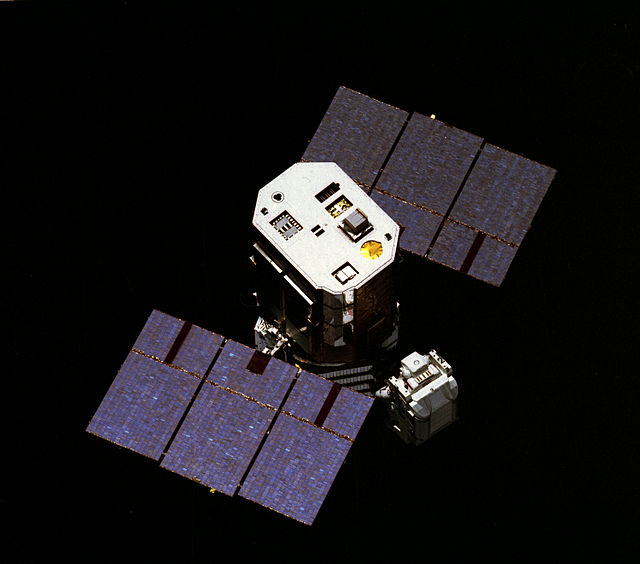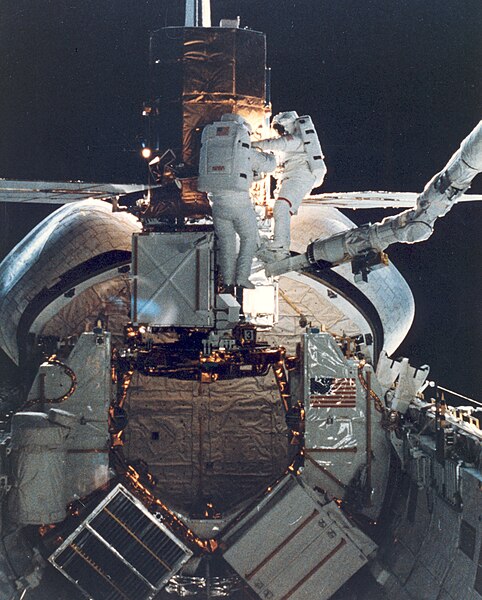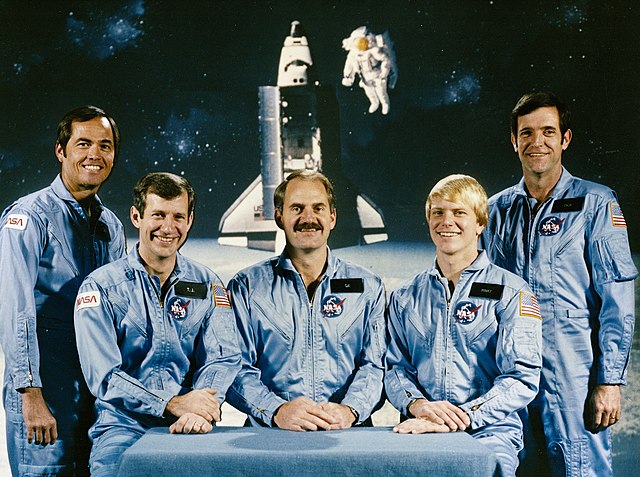The Solar Maximum Mission satellite was designed to investigate Solar phenomena, particularly solar flares. It was launched on February 14, 1980. The SMM was the first satellite based on the Multimission Modular Spacecraft bus manufactured by Fairchild Industries, a platform which was later used for Landsats 4 and 5 as well as the Upper Atmosphere Research Satellite.
Solar Maximum Mission.
Astronaut George Nelson attempts to capture the Solar Maximum Mission satellite during STS-41-C.
STS-41-C was NASA's eleventh Space Shuttle mission, and the fifth mission of Space Shuttle Challenger. The launch, which took place on April 6, 1984, marked the first direct ascent trajectory for a Space Shuttle mission. During the mission, Challenger's crew captured and repaired the malfunctioning Solar Maximum Mission satellite, and deployed the Long Duration Exposure Facility (LDEF) experimental apparatus. STS-41-C was extended one day due to problems capturing the Solar Max satellite, and the landing on April 13, 1984, took place at Edwards Air Force Base, instead of at Kennedy Space Center as had been planned. The flight was originally numbered STS-13.
Mission Specialists George Nelson and James van Hoften repair the captured Solar Maximum Mission satellite on April 11, 1984
Robert Crippen, Terry Hart, James van Hoften, George Nelson, Dick ScobeeSpace Shuttle program← STS-41-B (10)STS-41-D (12) →
The launch of STS-41-C on 6 April 1984
The deployed Long Duration Exposure Facility (LDEF), which became an important source of information on the small-particle space debris environment.






